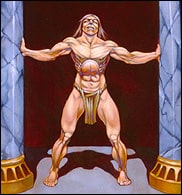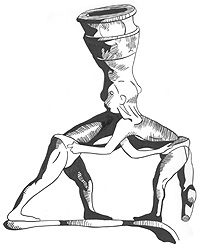Female servants sold out of the British Isles and also the German States of the Rhineland, where Catholic undesirables could be sold off to the English Plantations, might be sold in various ways.
The reader must keep in mind that laws and conditions for servants were specific to each province in the Plantations. Generally, Virginia being the first and largest province and its economy almost entirely based upon servile labor, the rules governing unfree person in that province are used to illustrate labor conditions and legal statutes in all of the various provinces and territories.
Early in the 17th century, at Jamestown, Virginia, women could be sold as “wives” and were held as their husband’s property for life. At this stage in this author’s reading I do not know how these provisions changed in Virginia.
Women might also be sold as servants with terms ranging from 3-7 years.
Women were sold as convicts, with the breaking of over 100 English laws, including shoplifting, warranting deportation to and sale to the plantations. These persons were known as “convict-servant” women or “transports” and served for 14 years.
A widowed mother or father or older sibling might sell a young woman or child for terms ranging from 3-31 years, but usually 7.
Kidnapped girls, numbering between 1,000 and 5,000 trafficked children per year through the 1600s and 1700s, were typically sold according to the following scheme described by Robert M. Grooms:
“Females under age 18 [1] were required to serve their owners until age 30, with that time being extended for a variety of offenses, including escape or having children, voluntary of by rape. [2] Children born to redemptioners became the property of the mothers’ owner until the child turned 30. Redemptioners [3] could be sold, traded or given away, passed on in wills and put up as collateral for debts.”
Notes
1. There was no reliable method for determining age, with up to half of owners posting advertisements for escaped servants knowing how old they were.
2. If the child was fathered by a black or mսlatto it was owned for life. For this reason, many Irish slave girls were raped by negro slaves at the behest of their master.
3. This is one of a catchall of terms used for unfree people, which amount to a welter of confusion including: indented, indentured servant, free-willers, newgaters [after a prison] and apprentice, all of whom were unfree property and most of whom never agreed to the terms of tehri enslavement or were even literate enough to read any contract that might be placed before them or even sign their name.
Stillbirth of a Nation: Caucasian Slavery in Plantation America: Part One
link › jameslafond.blogspot.com











I think you might enjoy the following podcast:
youtu.be/dq0JwkppWJI
The first hour or so is all about the early Indian Wars, and how they basically guaranteed that all the girls that fled to salem would have ptsd. They miss the mark on slavery when they mention indentured servants, but I only know that from reading your work.
This one: youtu.be/14IsXTg1GH8 is about strange disappearances in wilderness areas that remain unsolved, or with the missing person showing up 30 miles away across a canyon or river. It made me think of the cosmic horror themes in Conan stories and in your fiction. The books they reference, btw, go for around $75 on amazon or ebay.